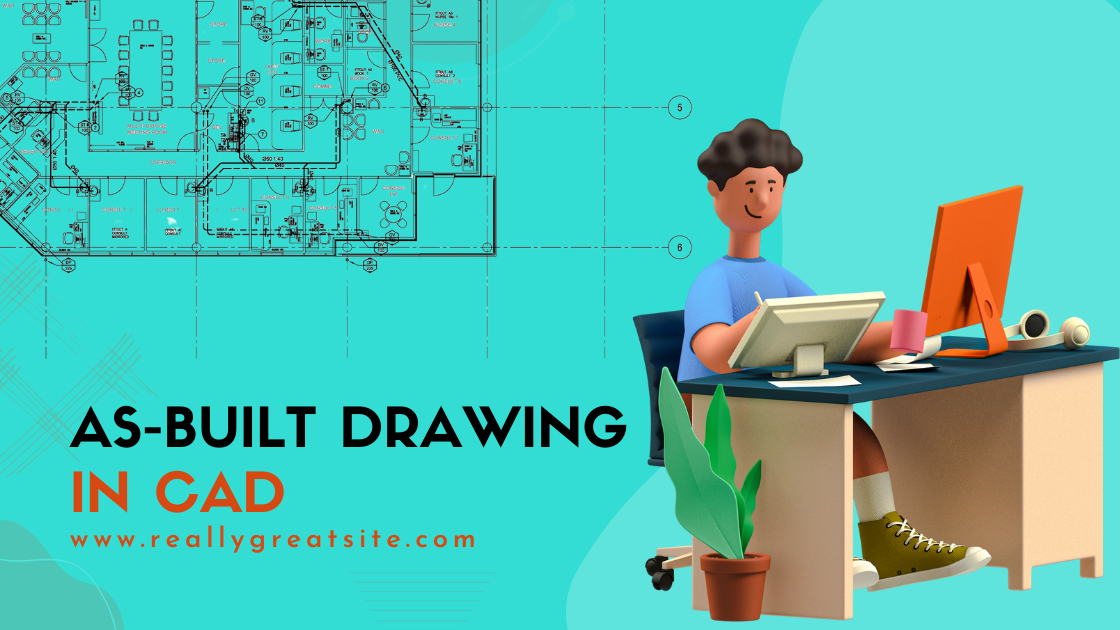What Are As-Built Drawings?
Imagine as-built drawings as a diary for a building. They capture every little detail from the very beginning of construction all the way to its completion. They’re like the ultimate snapshot, revealing how the project evolved from its initial plans to what it actually became. Without these drawings, figuring out any alterations or fixes down the line could become quite challenging.
What’s the Difference Between Design Plans and As-Builts?
Design plans are like the first draft of a building’s blueprint. They’re the architect’s and engineer’s vision of how the building should look and function. These plans detail everything from how it will look to how it will follow rules and regulations. They’re made before any construction begins.

As-builts, however, are like the final report card of the building. They show exactly how the building turned out after construction. They highlight any changes made from the original plans, whether because of unexpected challenges or decisions made during construction.
While design plans are like dreams, as-builts are the reality check. They reveal what actually happened during construction, like if different materials were used because the planned ones weren’t available. As-builts give us a true picture of the finished building.

Understanding the Importance of As-Builts
Picture yourself trying to complete a jigsaw puzzle, but some pieces are missing. It’s frustrating, right? Well, that’s similar to working on a building without as-builts. These documents are crucial because they provide a complete picture of what’s where inside the building.
Consider this scenario: you need to fix something related to the electrical system. It could be risky if you didn’t know where the electrical lines were located, right? As-builts act as a guide, like an instruction manual for the building. They streamline the process of managing, repairing, and improving buildings, making it safer and more efficient.
Looking ahead, having accurate construction as-builts can be incredibly valuable. They can save you time, money, and stress down the line. Let’s say there’s a legal dispute regarding the building. Having those detailed records can help protect you. Furthermore, if you ever decide to sell the building, having precise as-built drawings can verify all the work completed on it, instilling confidence in potential buyers.
Creating As-Builts: A Step-by-Step Process
Making as-builts, whether they’re for floor plans or architectural drawings, begins when construction kicks off. First off, workers start by jotting down detailed notes and snapping pictures of every single thing they put together. They make sure to mark down where all the pipes, wires, and structural bits go.
Once these notes are ready, engineers take over. They use these detailed records to craft precise drawings. Usually, it’s draftsmen who handle this part, and they use fancy computer programs like CAD (Computer-Aided Design) software, such as Autodesk. This step is super important because it ensures that everything matches up perfectly with the actual building.

Sometimes, engineers take things a step further by using 3D scans of the building. This is like using super cool technology to capture every little detail of the structure. Finally, all this information gets double-checked to make sure it’s spot-on.
So, making as-built floor plans is quite the meticulous process. It’s a blend of good old-fashioned note-taking combined with cutting-edge technology. This ensures that the as-builts are an exact replica of the building itself.
As-Built Construction Using CAD
When it comes to construction, there’s a big difference between design plans and as-builts, and it’s all about why and when they’re made. Design plans are like the detailed map for building something new. They lay out every step, showing exactly what needs to be done. But once the construction is finished, it’s time for the as-builts to come into play. They’re like the “after” picture, created to show exactly what was built in reality.
This difference is crucial for everyone involved with the building, from the workers who built it to the people who manage it afterward. Understanding this helps them get a clear picture of the building’s current state and how it fits into its long-term future. It’s like having the complete story of the building, from its initial blueprint to its final form.

